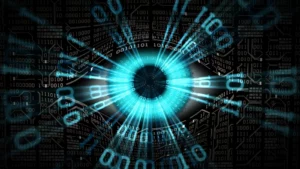
Title: Cybersecurity Trends and Priorities to Watch for 2025
As we step into a new year, it is essential to address the evolving landscape of cybersecurity threats and prioritize efforts accordingly. In this article, I will highlight some of the most critical trends and priorities that businesses must consider in 2025.
**Stronger Encryption and Identity-Based Security**
The first priority for 2025 is stronger encryption, specifically quantum-resistant encryption, to protect data in motion and at rest. This is crucial as encryption methods are being compromised by increasingly sophisticated AI-generated deepfakes and spoofing techniques. It’s essential to adopt identity-based cybersecurity with biometrics to mitigate these threats.
**AI-Powered Threat Detection and Sharing**
Another critical area of focus will be the development of better automated threat detection capabilities powered by AI, alongside upgraded public/private sector sharing of threat intelligence. This collaboration is vital in combating emerging cyber threats that exploit AI’s capabilities.
**Vulnerability Scanning and Supply Chain Risk Management**
2025 must also prioritize improved vulnerability scanning, including behavioral analytics, to manage security alerts and discover insider threats. Businesses should establish policies and tools to mitigate risks to supply chains, particularly through third-party vendors. This is a significant risk as 90% of cyber attacks come from within the supply chain.
**Cloud Migration and Legacy System Updates**
Optimizing migration to cloud platforms with secure web gateways and network/web application firewalls will be essential. Additionally, updating legacy systems by assimilating emerging technologies such as AI, 5G, and quantum-resistant algorithms into security platforms must take precedence.
**Internet of Things (IoT) Visibility and Zero Trust Strategy**
Increased visibility and monitoring of connected devices on the IoT will be critical to prevent potential breaches. A Zero Trust risk management strategy, from vulnerability assessments to securing code throughout its life cycle, should also be implemented to ensure maximum security.
**Strategic Shifts in Cybersecurity**
To address these emerging threats, we must shift our cybersecurity approach:
1. **Employee Education**: Emphasize employee education and training on cybersecurity best practices.
2. **Continuous Monitoring and Improvement**: Regularly monitor your systems and improve security protocols based on findings.
3. **Staying Ahead of the Curve**: Stay informed about new technologies and their impact on cybersecurity.
In conclusion, to stay ahead of these evolving threats, businesses must prioritize:
1. Stronger encryption
2. AI-powered threat detection
3. Vulnerability scanning
4. Supply chain risk management
5. Cloud migration and legacy system updates
6. IoT visibility and Zero Trust strategy
By focusing on these key areas, we can ensure that our digital lives remain secure in 2025.
Chuck Brooks is a Forbes contributor and a global cybersecurity expert with over 30 years of experience. His new book, “Inside Cyber: How AI, 5G, and Quantum Computing Will Transform Privacy and Our Security,” offers insights on navigating the intersection of technology, cybersecurity, and commerce.
**Disclaimer:** The opinions expressed in this article are those of the author and do not reflect the views of Forbes or its affiliates.
Source: www.forbes.com


